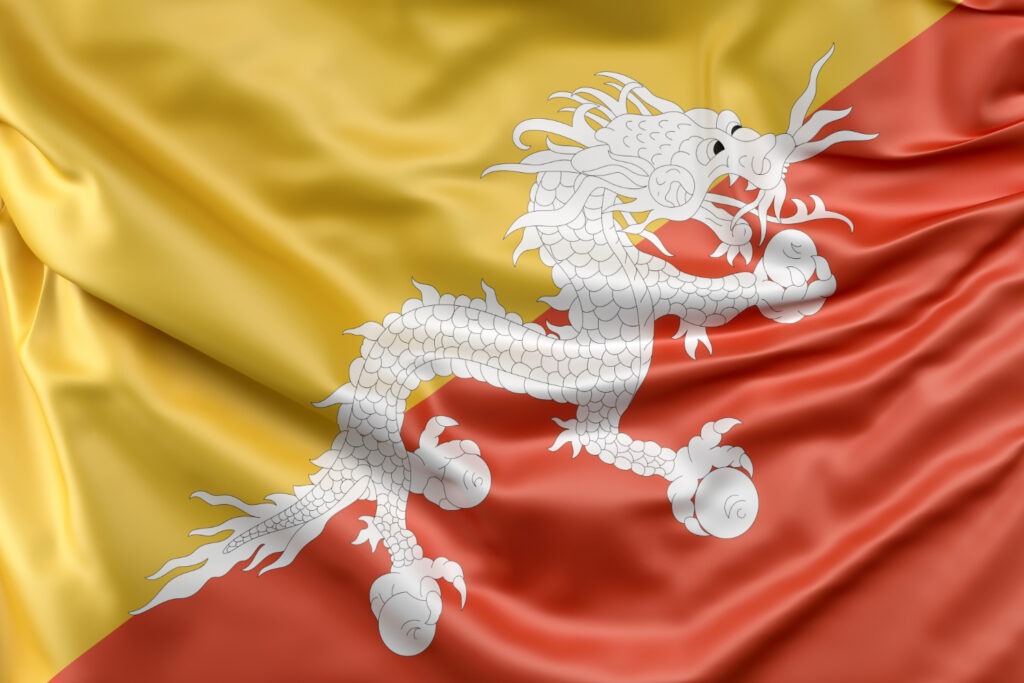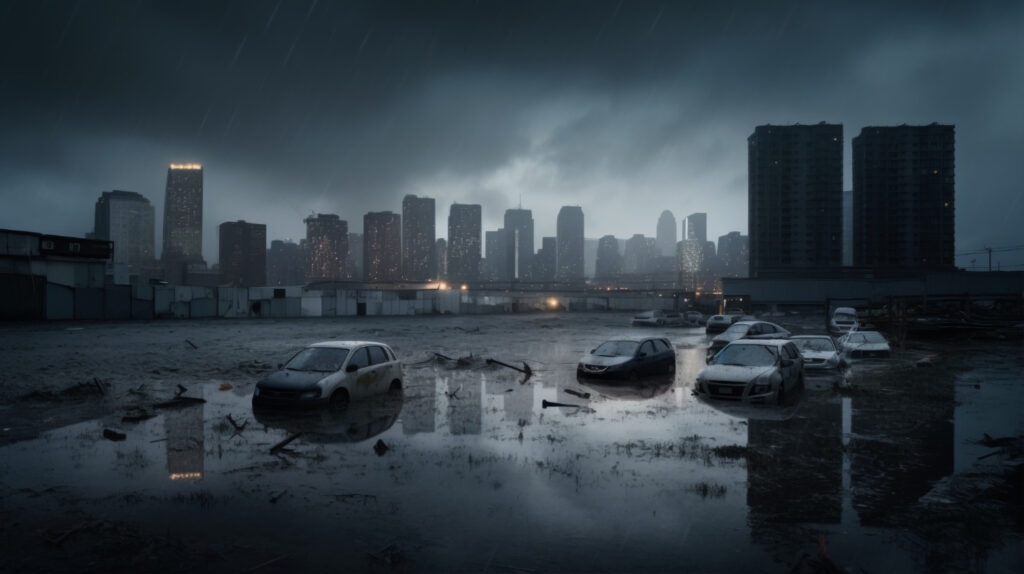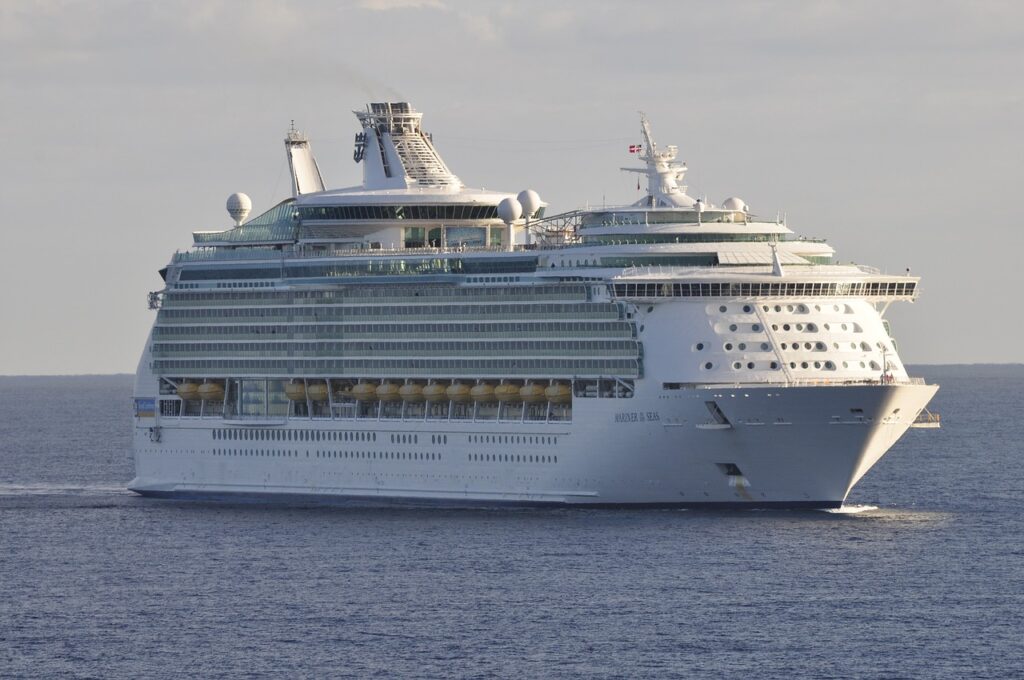Bhutan, known as the Land of the Thunder Dragon, is a paradise for travelers seeking unique cultural experiences, stunning landscapes, and a serene atmosphere. Here, we explore the top 20 places to visit in Bhutan, each offering something special and unforgettable.
1. Thimphu – The Capital City
Exploring Thimphu’s Monasteries
Thimphu, the capital of Bhutan, is a blend of tradition and modernity. One of the first places to visit in Bhutan is the iconic Tashichho Dzong, a stunning monastery and fortress that serves as the seat of the Bhutanese government. The dzong’s architecture is breathtaking, with its whitewashed walls and golden-topped towers.
Another must-visit monastery in Thimphu is the Changangkha Lhakhang, an ancient fortress-like temple perched on a ridge above the city. It offers panoramic views of the Thimphu valley and is a significant pilgrimage site for Bhutanese families.
Discovering Thimphu’s Markets
Thimphu’s vibrant markets are a treasure trove of local crafts and produce. The Weekend Market is a bustling hub where you can find everything from fresh vegetables to traditional Bhutanese handicrafts. It’s a great place to soak in the local culture and pick up unique souvenirs.
The Craft Bazaar, located near the main town, features stalls set up in traditional bamboo huts. Here, you can buy handmade textiles, jewelry, and artwork directly from local artisans, supporting the community and taking home a piece of Bhutanese heritage.
2. Paro – The Gateway to Bhutan
The Iconic Tiger’s Nest Monastery
Paro is home to one of the most iconic places to visit in Bhutan – the Tiger’s Nest Monastery (Taktsang Palphug Monastery). Perched precariously on a cliffside, this sacred site is a must-visit. The trek to the monastery is challenging but rewarding, offering stunning views and a deep sense of spiritual tranquility.
Exploring Paro’s Historical Sites
Paro is rich in history and culture. Visit the Rinpung Dzong, a fortress-monastery that dates back to the 16th century. The dzong houses a monastery and government offices and is known for its impressive architecture and annual Paro Tshechu festival.
Another historical gem is the National Museum of Bhutan, housed in a former watchtower. The museum offers fascinating insights into Bhutanese culture, art, and history, making it a must-see for any visitor to Paro.
3. Punakha – The Ancient Capital
The Majestic Punakha Dzong
Punakha, the ancient capital of Bhutan, is renowned for its majestic Punakha Dzong, also known as the “Palace of Great Happiness.” This stunning fortress is situated at the confluence of the Pho Chhu and Mo Chhu rivers. Its breathtaking architecture and serene surroundings make it one of the top places to visit in Bhutan.
The Punakha Suspension Bridge
The Punakha Suspension Bridge, one of the longest suspension bridges in Bhutan, offers an exhilarating experience. Spanning the Pho Chhu River, the bridge connects Punakha Dzong to nearby villages and provides stunning views of the valley and mountains. Walking across this swaying bridge is an adventure in itself.
4. Bumthang – The Spiritual Heartland
Jakar Dzong and Kurje Lhakhang
Bumthang, often referred to as the spiritual heartland of Bhutan, is home to numerous ancient temples and monasteries. Jakar Dzong, also known as “The Castle of the White Bird,” stands majestically on a ridge overlooking the Bumthang valley. It is one of the largest dzongs in Bhutan and plays a significant role in the region’s religious and administrative affairs.
Kurje Lhakhang is another important spiritual site in Bumthang. This temple complex is built around a cave where Guru Rinpoche meditated and left an imprint of his body. It is a sacred pilgrimage site for Buddhists and a place of profound spiritual significance.
The Mystical Mebar Tsho (Burning Lake)
Mebar Tsho, or the Burning Lake, is a sacred site located in the Tang Valley of Bumthang. According to legend, Terton Pema Lingpa discovered several religious treasures hidden by Guru Rinpoche in this lake. The site is considered highly spiritual, and many visitors come to offer butter lamps and prayers.
5. Trongsa – The Historical Hub
Trongsa Dzong
Trongsa, located in central Bhutan, is a historical hub with a rich past. The Trongsa Dzong is one of the most impressive fortresses in Bhutan, strategically positioned overlooking the Mangde River. This massive structure has played a crucial role in Bhutan’s history and offers breathtaking views of the surrounding landscape.
The Royal Heritage Museum
Housed in the ancient watchtower of Trongsa, the Royal Heritage Museum offers a fascinating glimpse into Bhutan’s royal history. The museum’s exhibits include artifacts, royal portraits, and religious treasures, providing valuable insights into the kingdom’s cultural heritage.
6. Phobjikha Valley – The Valley of Black-Necked Cranes
The Gangtey Monastery
Phobjikha Valley is a picturesque glacial valley known for its natural beauty and the Gangtey Monastery. This Nyingmapa monastery, also known as Gangtey Goenpa, offers stunning views of the valley and is an important religious site. The surrounding area is perfect for nature walks and birdwatching.
Black-Necked Crane Information Centre
Phobjikha Valley is home to the endangered black-necked cranes, which migrate here from Tibet during the winter months. The Black-Necked Crane Information Centre provides educational exhibits about these majestic birds and offers the opportunity to observe them in their natural habitat.
7. Haa Valley – The Hidden Gem
Lhakhang Karpo and Lhakhang Nagpo
Haa Valley, one of Bhutan’s lesser-known destinations, is a hidden gem with serene landscapes and traditional villages. The valley is home to Lhakhang Karpo (White Temple) and Lhakhang Nagpo (Black Temple), two ancient temples with intriguing legends and spiritual significance.
Chele La Pass
Chele La Pass, the highest motorable pass in Bhutan, offers stunning panoramic views of the Himalayan range, including Mount Jomolhari. The drive to the pass is scenic, and the view from the top is breathtaking, making it a must-visit destination for nature lovers.
8. Wangdue Phodrang – The Land of Ornamental Speech
Wangdue Phodrang Dzong
Wangdue Phodrang is known for its strategic location and the impressive Wangdue Phodrang Dzong, which commands views over the Punatsangchhu River. Although the dzong suffered a devastating fire in 2012, restoration work is ongoing, and it remains a significant historical and cultural site.
Phobjikha Valley
Part of Wangdue Phodrang, the Phobjikha Valley is a stunning glacial valley and one of the most beautiful places to visit in Bhutan. The valley is home to the Gangtey Monastery and the rare black-necked cranes, making it a haven for nature and bird enthusiasts.
9. Lhuntse – The Remote Paradise
Lhuntse Dzong
Lhuntse, located in northeastern Bhutan, is a remote paradise known for its rugged beauty and traditional culture. Lhuntse Dzong is a significant religious and administrative center, perched on a hill overlooking the Kurichu River. The dzong’s architecture and the surrounding landscape are truly captivating.
Khoma Village
Khoma Village in Lhuntse is renowned for its intricate and exquisite kira weaving. The village is a great place to observe traditional weaving techniques and purchase beautiful handwoven textiles. Visiting Khoma offers a unique glimpse into Bhutanese craftsmanship and rural life.
10. Mongar – The Land of the Eastern Himalayas
Mongar Dzong
Mongar, situated in eastern Bhutan, is known for its lush landscapes and vibrant culture. Mongar Dzong, unlike many other dzongs in Bhutan, was built in the 20th century. Despite its relatively recent construction, the dzong follows traditional Bhutanese architectural styles and offers stunning views of the surrounding area.
Drametse Monastery
Drametse Monastery, one of the most important monasteries in eastern Bhutan, is a significant cultural and religious site. It is renowned for the Drametse Ngacham, a sacred mask dance that has been recognized by UNESCO as a Masterpiece of the Oral and Intangible Heritage of Humanity.
11. Samdrup Jongkhar – The Gateway to India
Samdrup Jongkhar Market
Samdrup Jongkhar, located in southeastern Bhutan, serves as a gateway to India. The town’s market is a bustling hub where you can find a variety of goods, from fresh produce to traditional Bhutanese crafts. It’s a great place to experience local life and pick up unique souvenirs.
Dewathang
Dewathang, a small town near Samdrup Jongkhar, is known for its historical significance. It was here that the Bhutanese army defeated the British during the Duar War in 1865. The town offers a glimpse into Bhutan’s military history and is surrounded by scenic landscapes.
12. Trashigang – The Jewel of the East
Trashigang Dzong
Trashigang, often referred to as the “Jewel of the East,” is a vibrant town with a rich cultural heritage. Trashigang Dzong, perched on a cliff overlooking the Drangme Chhu River, is an architectural marvel and a significant religious center. The dzong hosts the annual Trashigang Tshechu, a colorful festival featuring traditional mask dances and rituals.
Sakteng Wildlife Sanctuary
The Sakteng Wildlife Sanctuary, located in Trashigang, is a unique protected area known for its diverse flora and fauna. The sanctuary is home to the semi-nomadic Brokpa people and offers opportunities for trekking and wildlife viewing. It’s a great destination for nature enthusiasts and those seeking off-the-beaten-path experiences.
13. Pemagatshel – The Land of Bliss
Pemagatshel Dzong
Pemagatshel, meaning “Blissful Land,” is a serene and picturesque district in southeastern Bhutan. Pemagatshel Dzong is a notable landmark, known for its traditional Bhutanese architecture and beautiful surroundings. The dzong serves as an important religious and administrative center.
Chhimung Village
Chhimung Village in Pemagatshel is known for its traditional bamboo and wood crafts. The village offers a glimpse into rural Bhutanese life and craftsmanship. Visitors can observe artisans at work and purchase handmade items, supporting the local community.
14. Zhemgang – The Wildlife Paradise
Zhemgang Dzong
Zhemgang, located in central Bhutan, is a paradise for wildlife enthusiasts. Zhemgang Dzong, perched on a ridge overlooking the Mangde Chhu River, offers stunning views and a tranquil atmosphere. The dzong is an important cultural and religious site in the region.
Royal Manas National Park
Royal Manas National Park, one of Bhutan’s oldest national parks, is located in Zhemgang. The park is a biodiversity hotspot, home to a wide range of wildlife, including tigers, elephants, and golden langurs. It’s a must-visit destination for nature lovers and adventure seekers.
15. Gelephu – The Commercial Hub
Gelephu Market
Gelephu, a bustling town in southern Bhutan, is a major commercial hub. The Gelephu Market is a vibrant place where you can find a variety of goods, from fresh produce to traditional handicrafts. The market is a great place to experience the local culture and pick up unique souvenirs.
Gelephu Hot Springs
Gelephu is also known for its hot springs, which are believed to have therapeutic properties. The hot springs are located in a serene natural setting and offer a relaxing experience for visitors. It’s a perfect place to unwind and rejuvenate.
16. Dagana – The Hidden Treasure
Dagana Dzong
Dagana, a hidden treasure in southwestern Bhutan, is known for its pristine landscapes and traditional culture. Dagana Dzong is a significant historical and religious site, perched on a hilltop overlooking the valley. The dzong offers stunning views and a peaceful atmosphere.
Nichula Village
Nichula Village in Dagana is known for its beautiful landscapes and traditional farming practices. The village offers a glimpse into rural Bhutanese life and is a great place to experience the country’s agricultural heritage. Visitors can also enjoy scenic hikes and nature walks in the surrounding area.
17. Tsirang – The Land of Oranges
Tsirang Dzong
Tsirang, often referred to as the “Land of Oranges,” is a fertile region known for its citrus orchards and lush landscapes. Tsirang Dzong is a notable landmark, known for its traditional architecture and beautiful surroundings. The dzong serves as an important religious and administrative center.
Sunkosh River
The Sunkosh River, which flows through Tsirang, offers opportunities for river rafting and fishing. The river’s scenic beauty and tranquil atmosphere make it a popular destination for outdoor enthusiasts. Visitors can enjoy a variety of water-based activities and explore the surrounding nature.
18. Gasa – The Land of Hot Springs
Gasa Dzong
Gasa, located in the northern part of Bhutan, is known for its hot springs and stunning landscapes. Gasa Dzong, also known as Tashi Thongmon Dzong, is a significant historical and religious site. The dzong offers panoramic views of the surrounding mountains and valleys.
Gasa Hot Springs
Gasa Hot Springs, also known as Gasa Tshachus, are renowned for their healing properties. The hot springs are located in a serene natural setting and offer a relaxing experience for visitors. It’s a perfect place to unwind and rejuvenate.
19. Laya – The Remote Highland
Laya Village
Laya, one of the most remote highland villages in Bhutan, offers a unique cultural experience. The village is inhabited by the Layap people, known for their distinct traditional dress and lifestyle. Visiting Laya provides a glimpse into the unique highland culture and stunning landscapes.
Laya Gasa Trek
The Laya Gasa Trek is one of the most popular trekking routes in Bhutan. The trek takes you through picturesque valleys, high mountain passes, and remote villages, offering stunning views and a challenging adventure. It’s a must-do for trekking enthusiasts.
20. Merak and Sakteng – The Nomadic Highlands
Merak Village
Merak, located in the eastern part of Bhutan, is a remote highland village known for its nomadic culture. The village is inhabited by the Brokpa people, who follow a semi-nomadic lifestyle. Visiting Merak offers a unique cultural experience and a chance to explore the beautiful highland landscapes.
Sakteng Village
Sakteng, another highland village in eastern Bhutan, is known for its traditional Brokpa culture. The village is surrounded by stunning landscapes and offers opportunities for trekking and cultural immersion. It’s a great place to experience the unique highland culture and natural beauty.
Conclusion
Bhutan is a land of stunning landscapes, rich culture, and unique experiences. From the iconic Tiger’s Nest Monastery in Paro to the remote highland villages of Laya and Merak, the top 20 places to visit in Bhutan offer something for every traveler. Whether you’re seeking spiritual enlightenment, adventure, or simply a peaceful escape, Bhutan has it all. So pack your bags and get ready to explore the Land of the Thunder Dragon!





